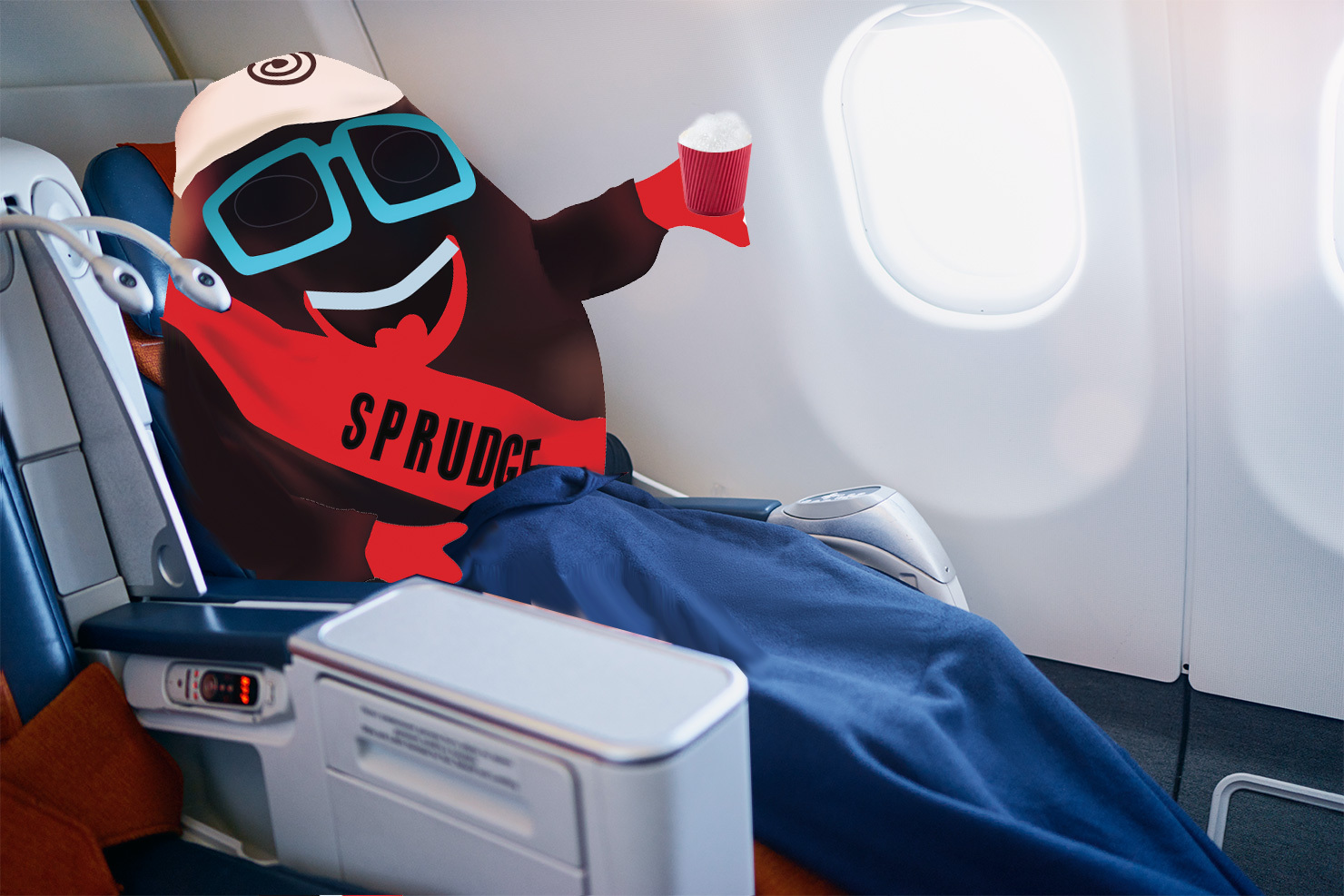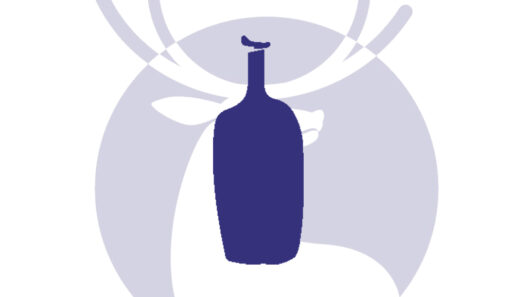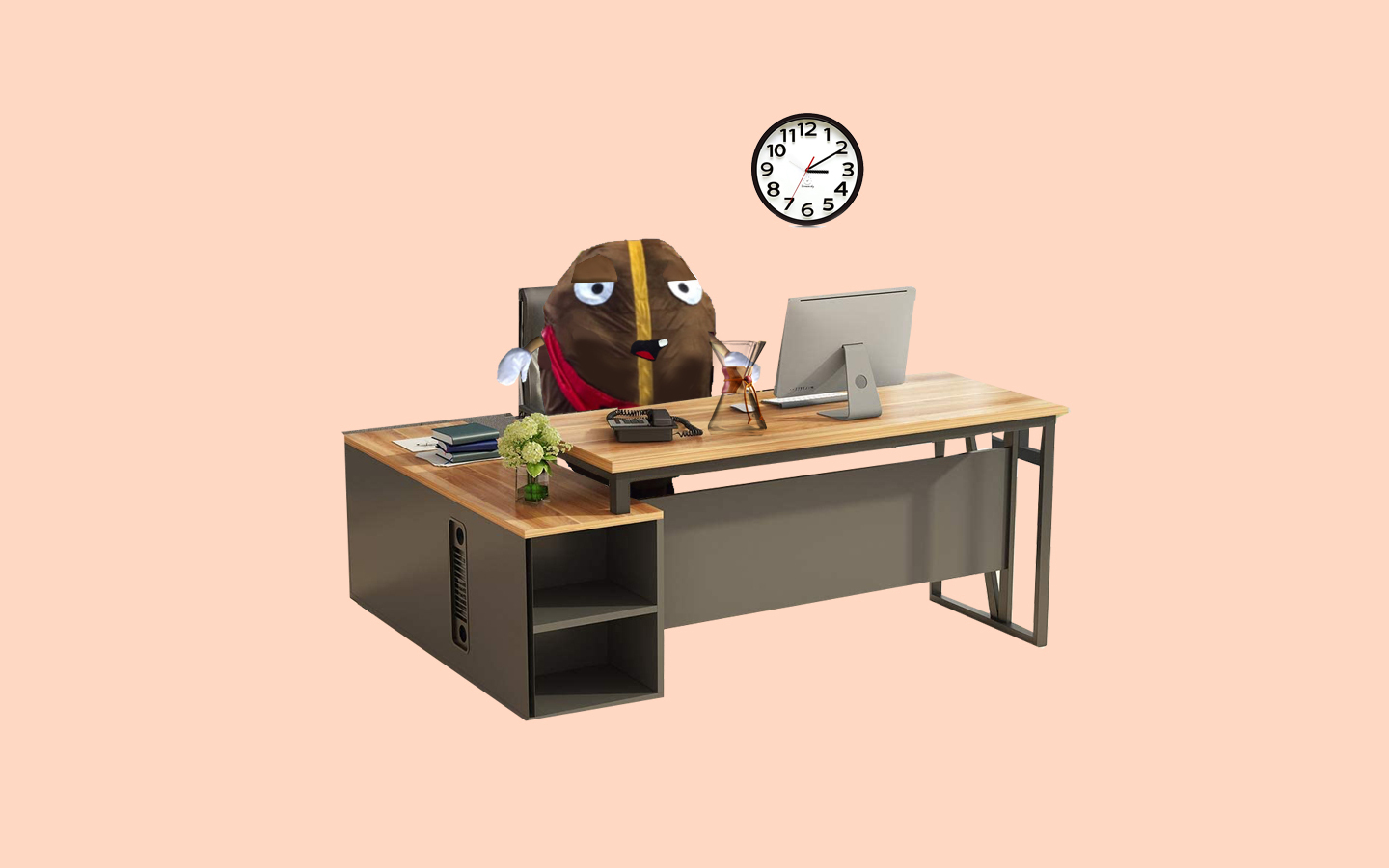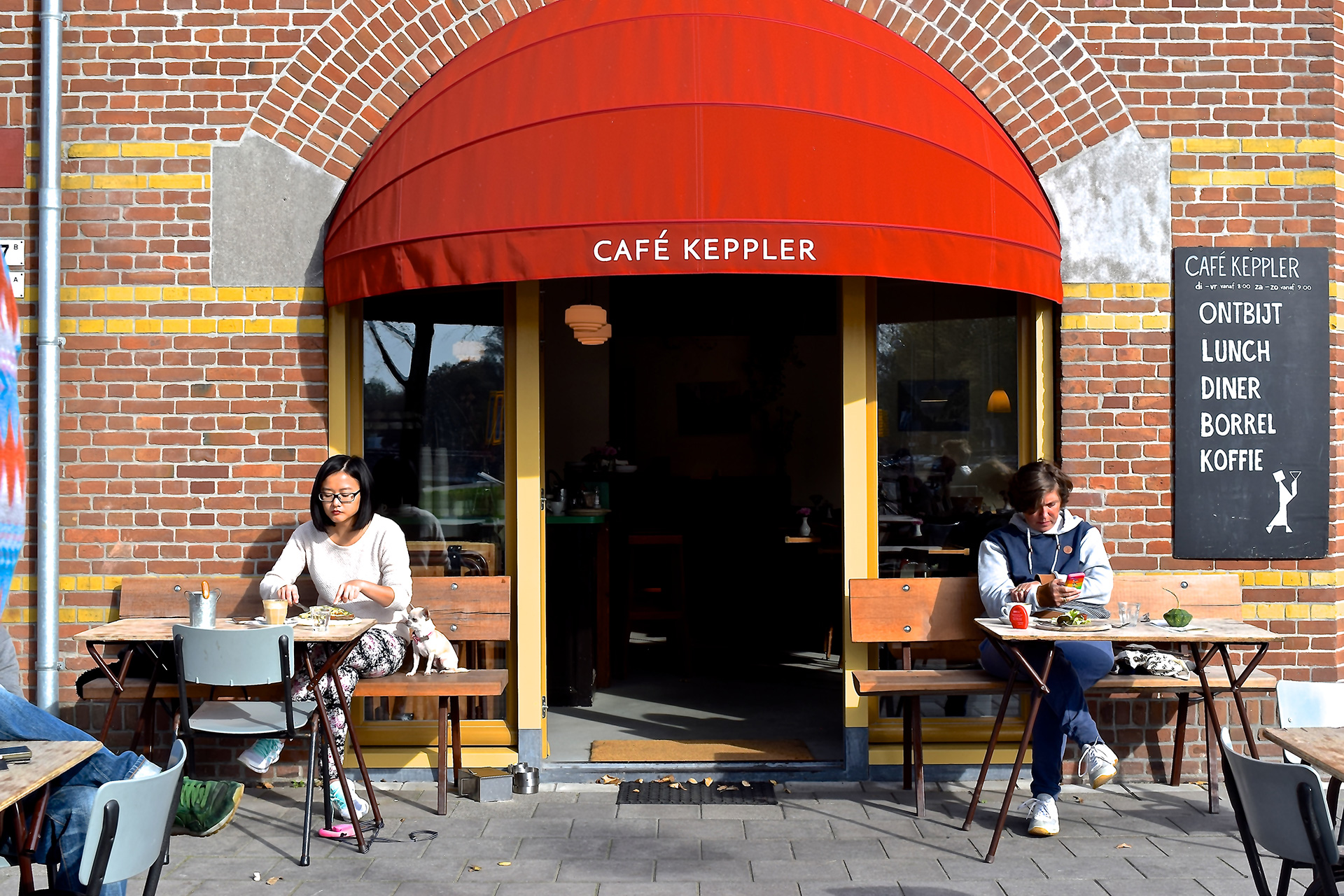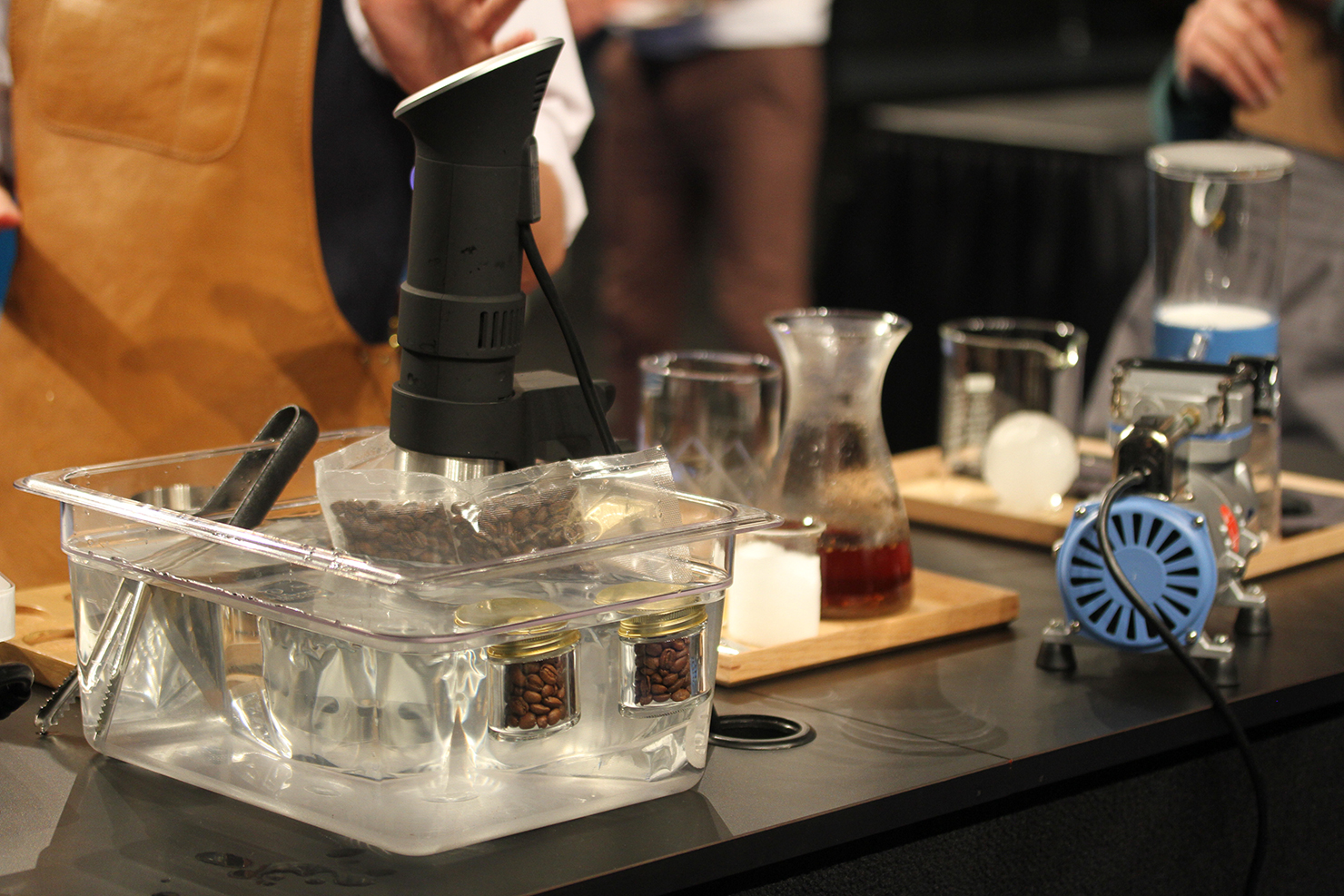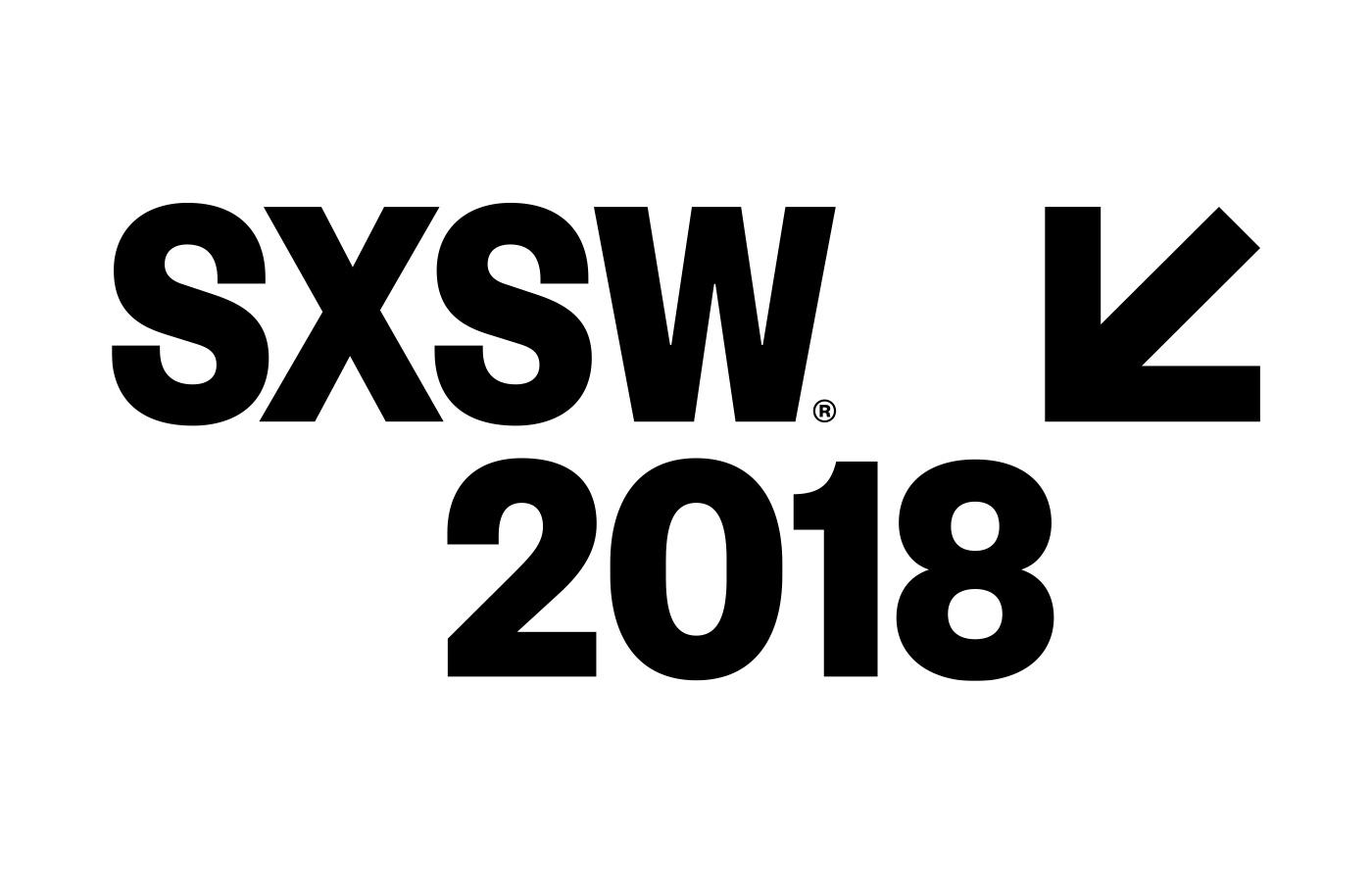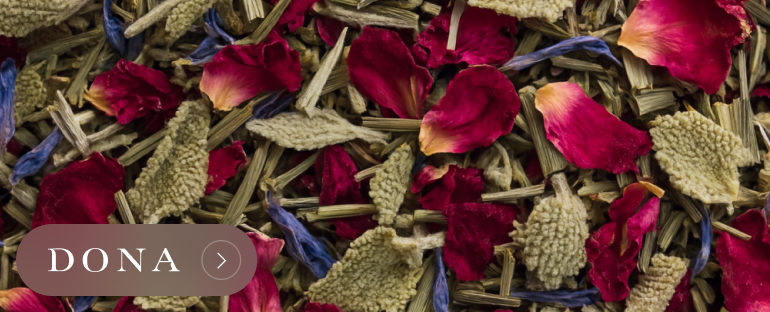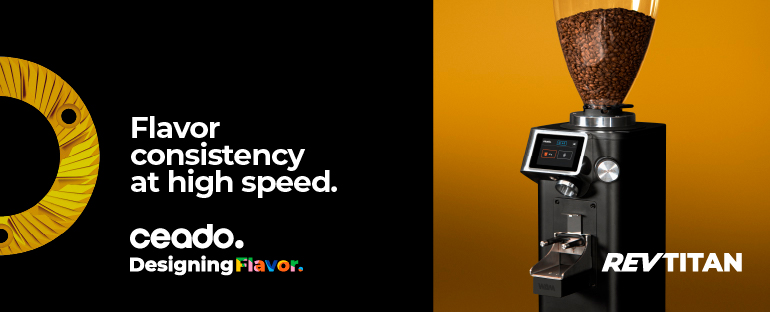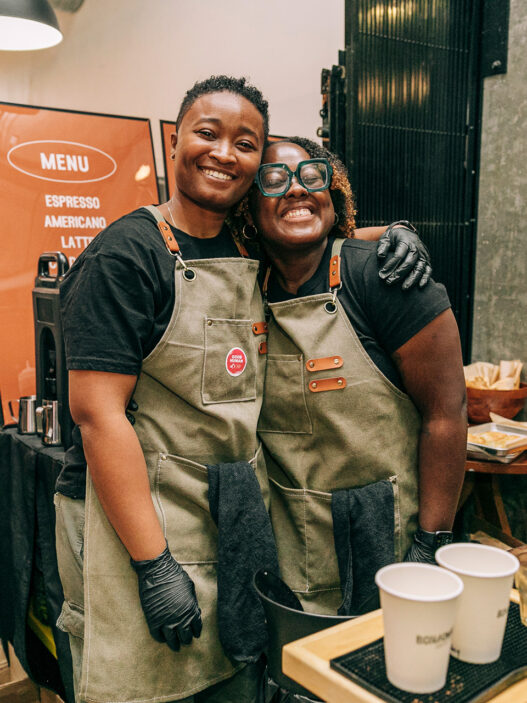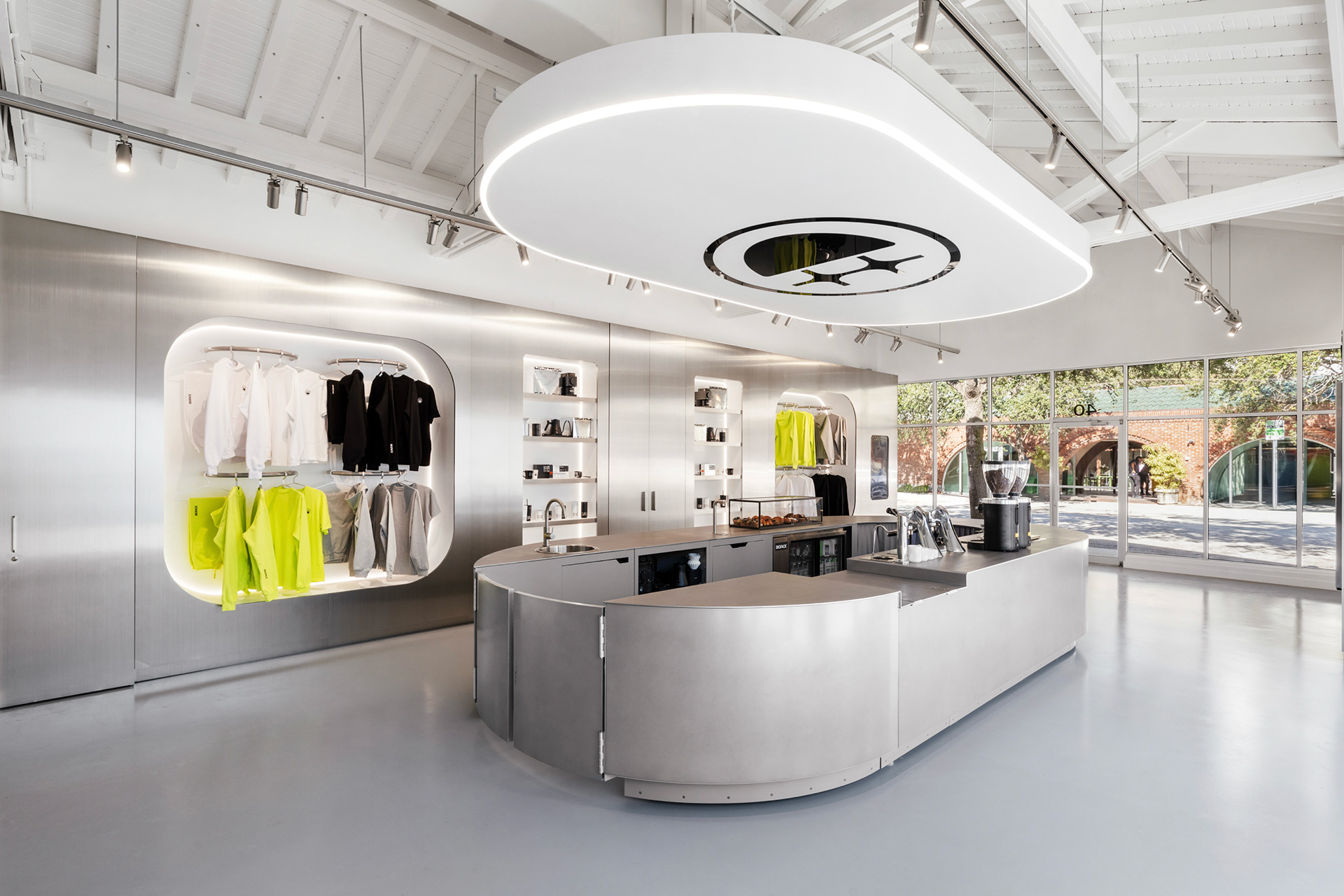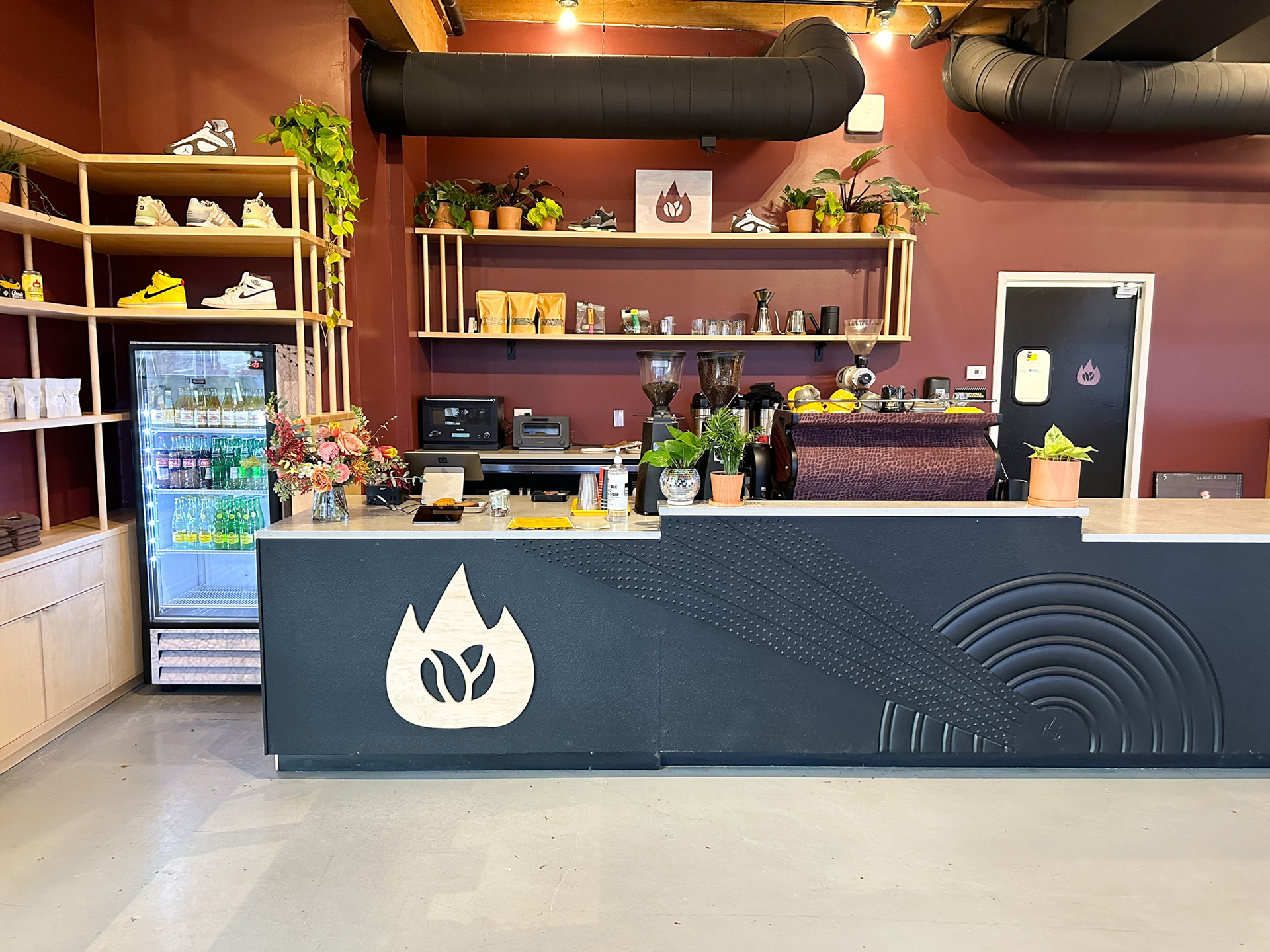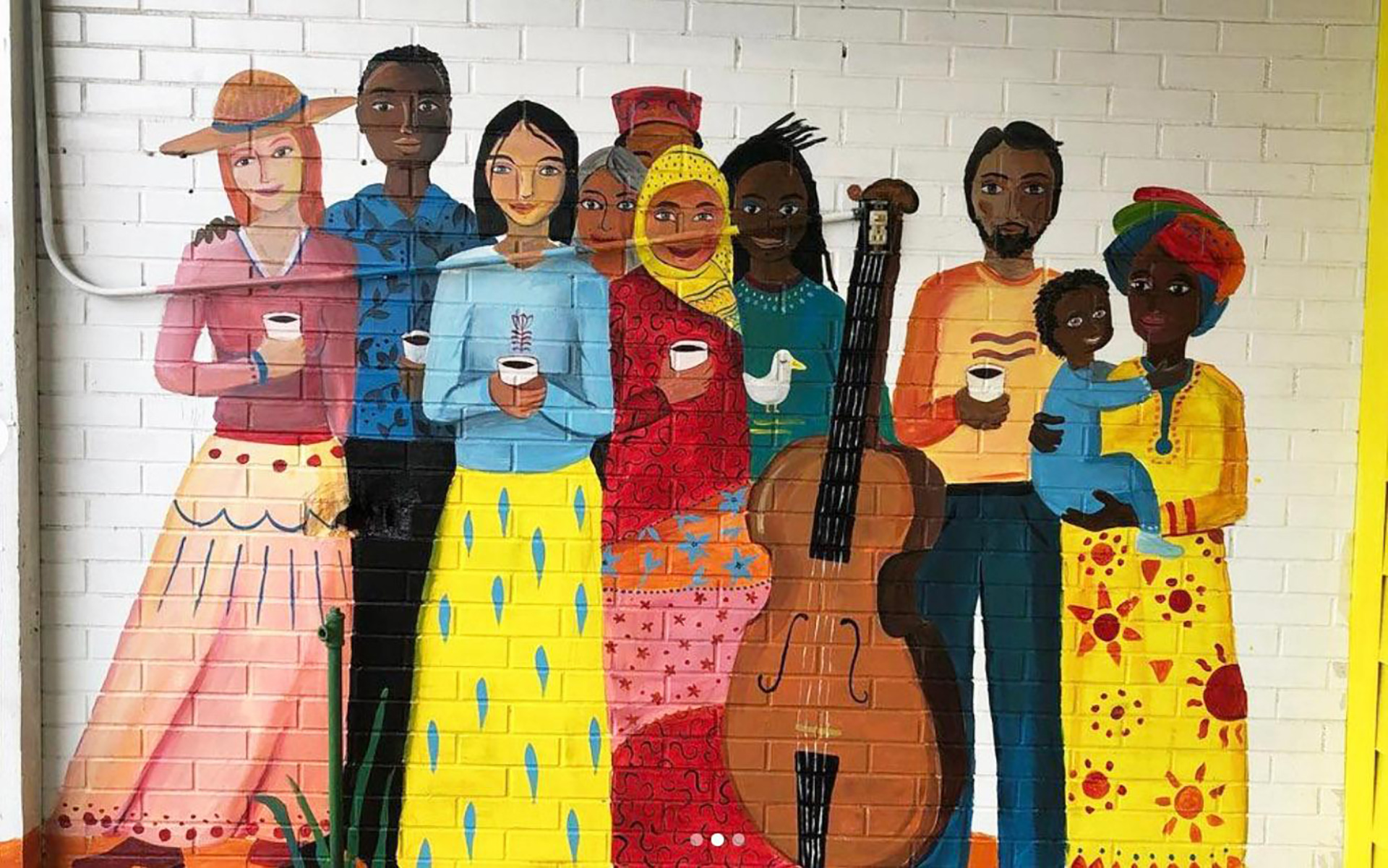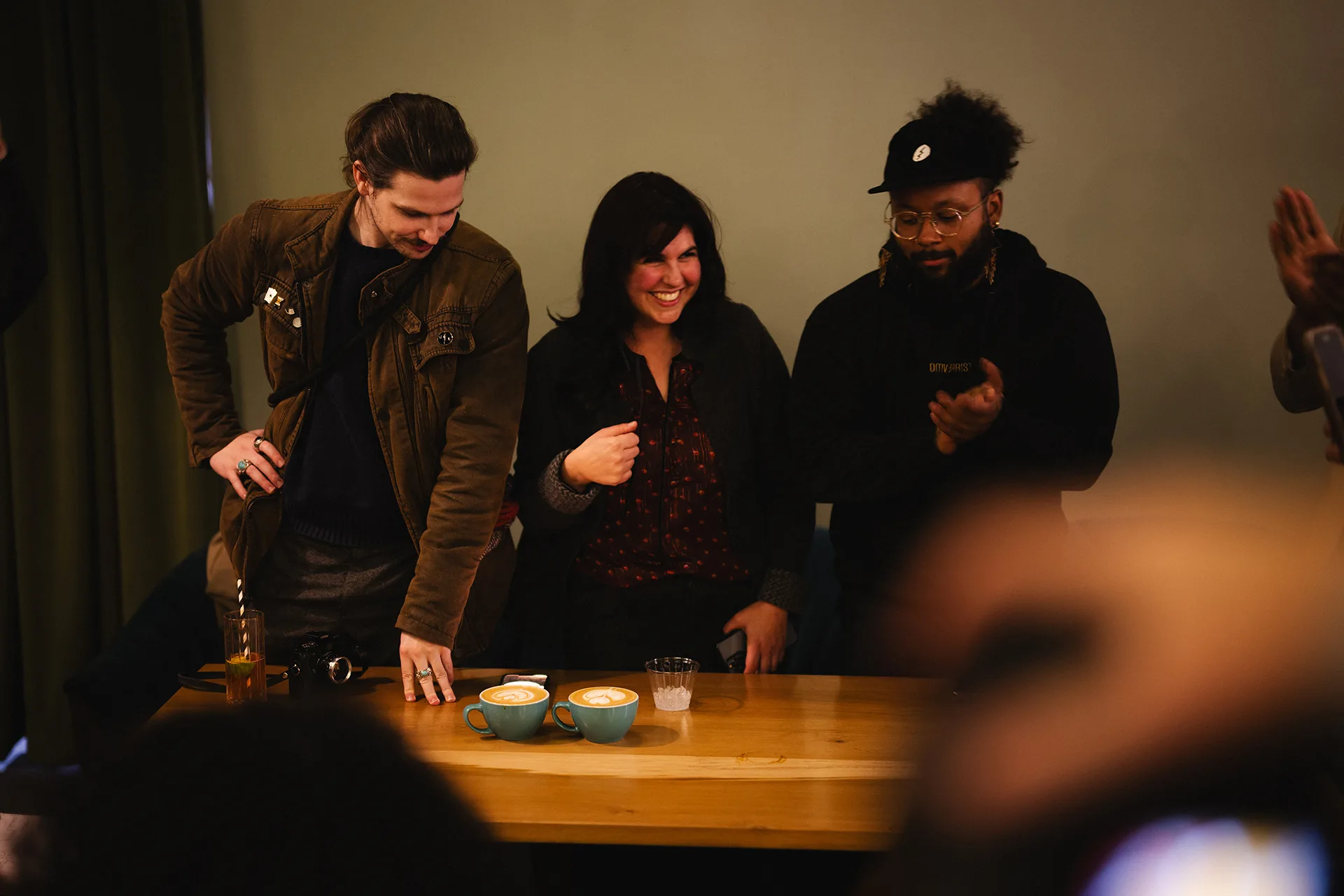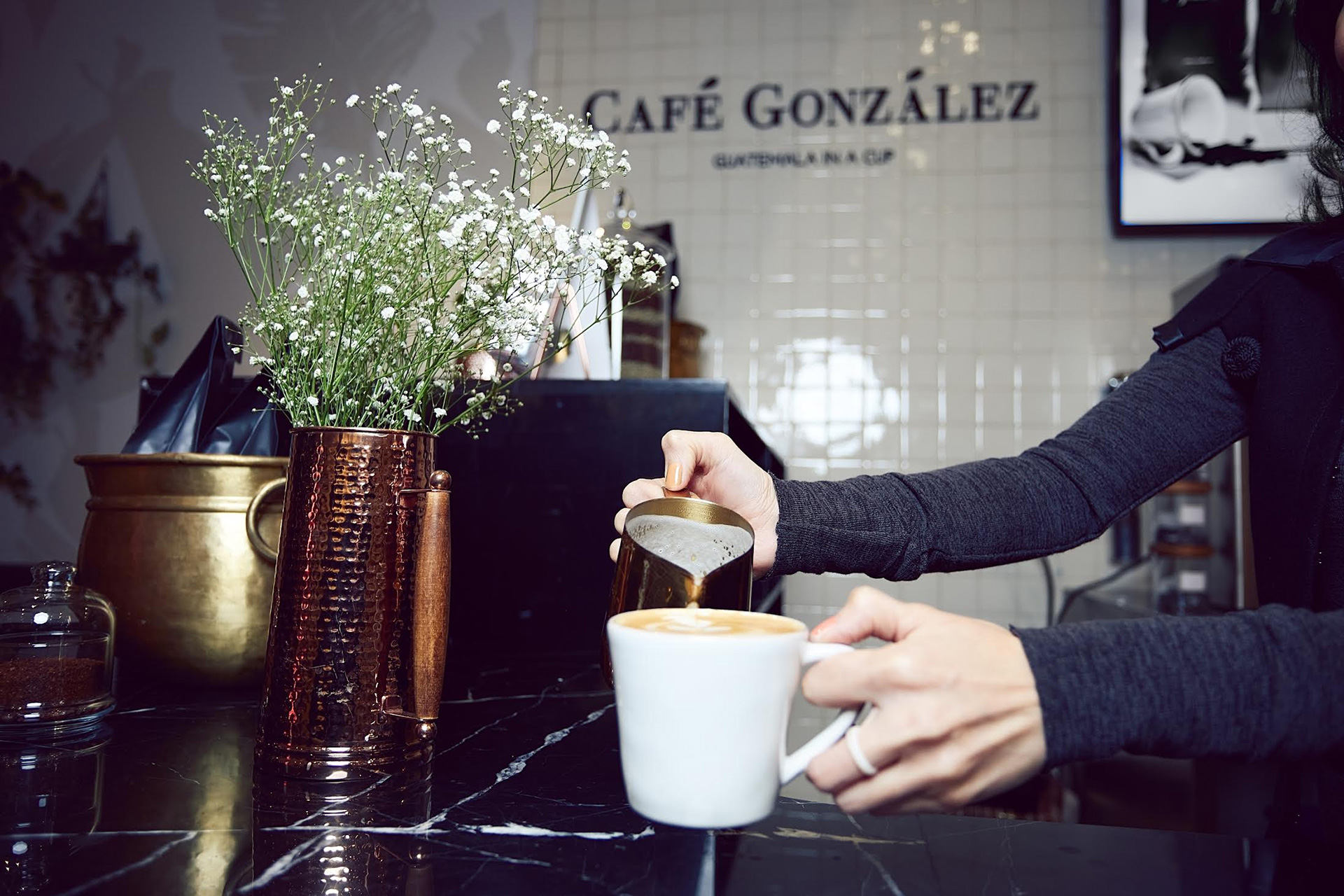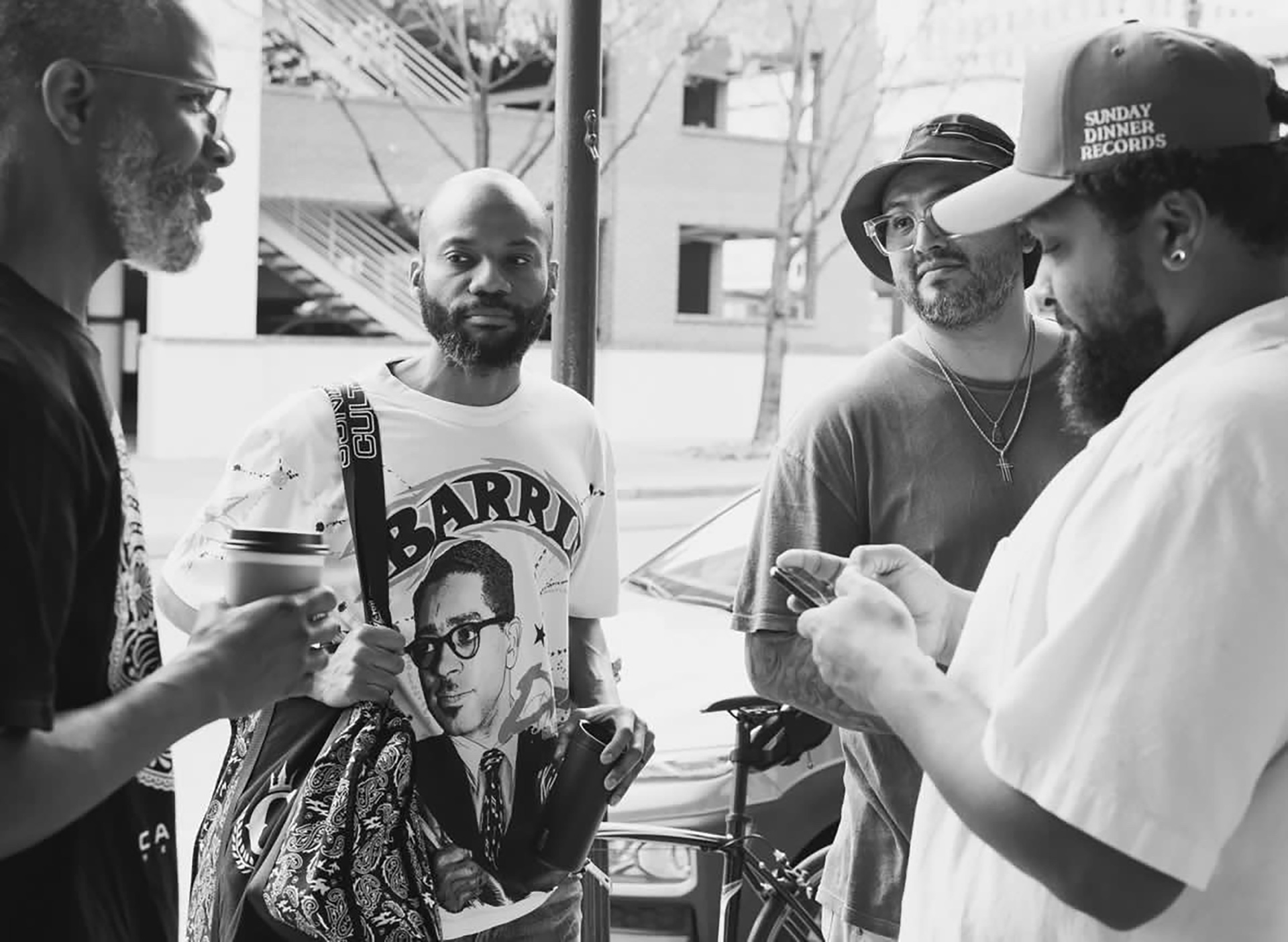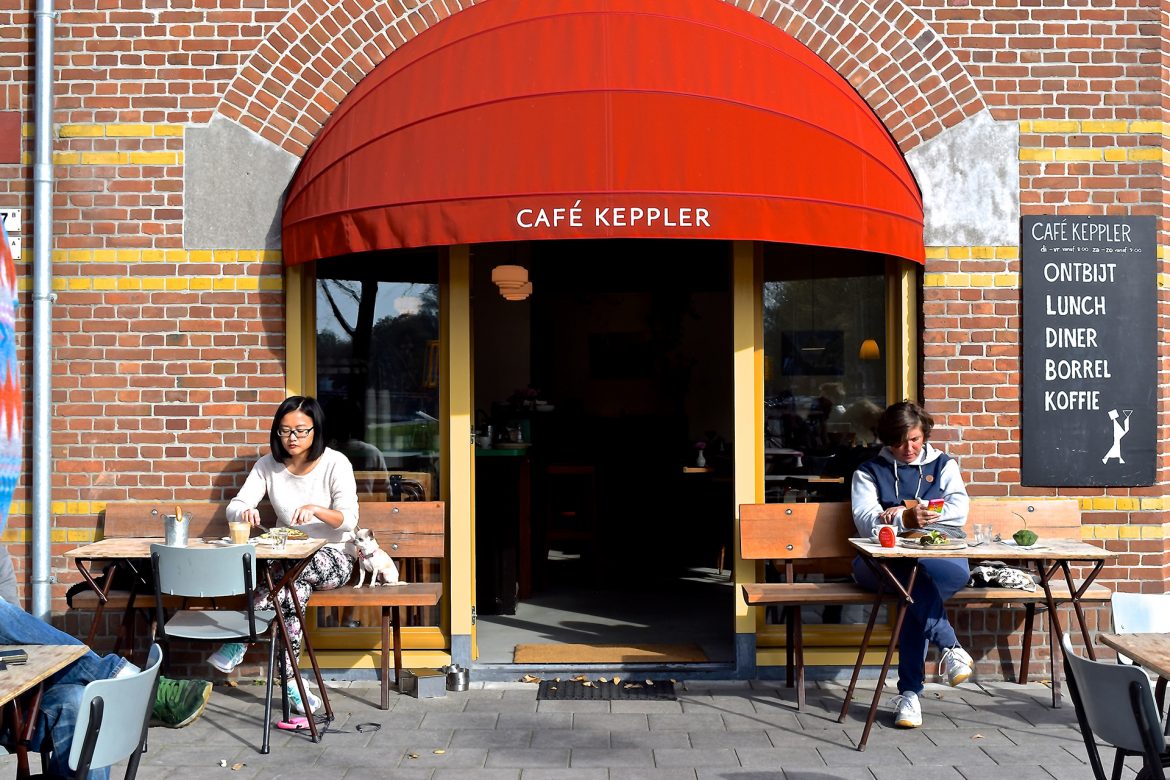
At 37, Kees Kraakman is approaching two decades in specialty coffee. The Netherlands knows him as a whiz kid, first taught to cup and roast by Jacob Boot, father of the brothers who today head Boot Coffee and Boot Koffie. Back in 2012, he launched pop-up Amsterdam espresso bar SOK and afterwards, for five years, ran roastery Stadsbranderij Noord. Still, Kraakman has largely stayed behind the scenes.
The opening of Café Keppler this past June in Amsterdam North might have been an opportunity for basking in glory. Yet when asked if it was always the plan to have his own place, Kraakman makes clear that he is not ready to revel.
“This should be my magnum opus, yeah—I’m definitely not 100% satisfied at this point,” he dryly replies, while conceding, “but this is the first time that I really took a gamble and a plunge to put up something like this.”
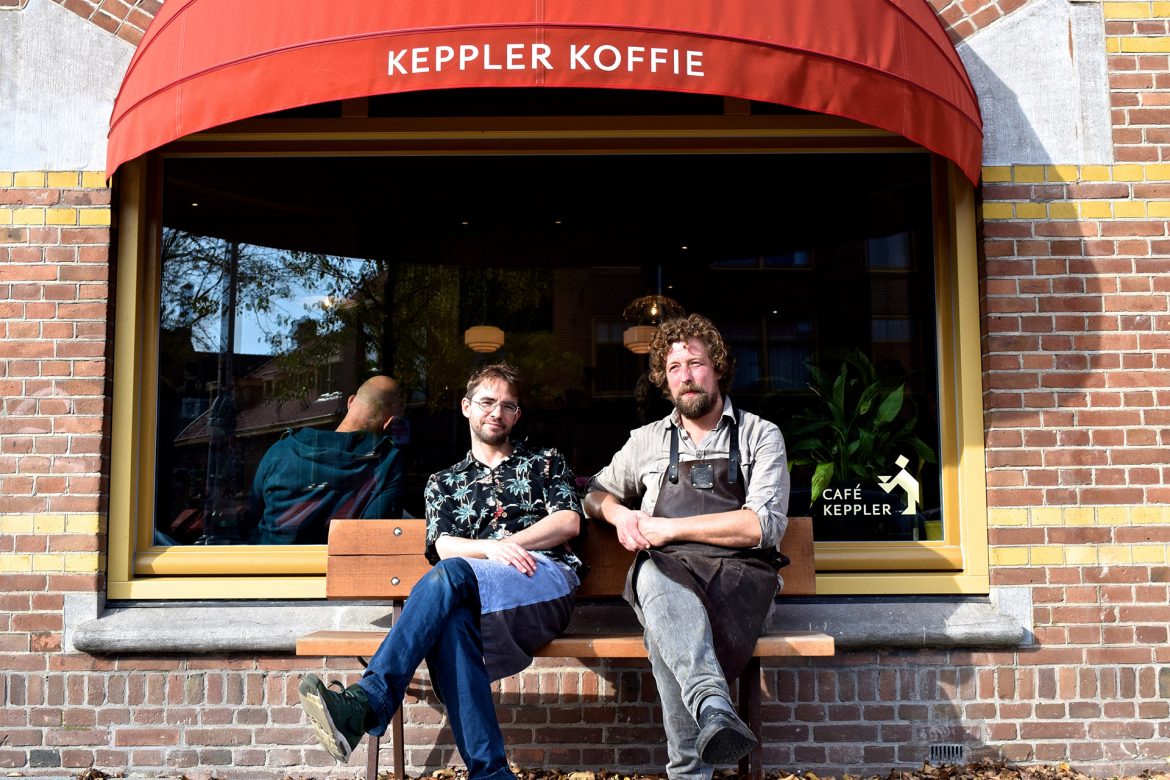
Like its neighbors, the cafe won the right to establish itself on Van der Pekplein in a city contest for small businesses. Red awnings and butter-hued fenestration unite the storefronts, though Keppler’s corner spot and outdoor seating give it a sense of sprawl. Wraparound windows let lots of light in, warming the early 20th-century furnishings. The ceiling impresses, its wooden slats’ geometrical fashioning simultaneously evoking a classical music chamber and a Scandinavian sauna.
Restaurateur Mike Lubben, Keppler’s co-owner, adds to the harmony. The men have distinct responsibilities—“he’s the real HORECA [HotelRestaurantCafe] guy, and I’m the coffee guy,” notes Kraakman—though their values align. “We share the same vision in how we want to be open for everybody, so really, a neighborhood cafe with quality products.”
It was not for nothing that they named the venue after Arie Keppler, a social-democratic champion of public housing in Amsterdam. Kraakman says he liked the surname’s alliteration with “café.” That word was selected for its Dutch connotation of grand café, signaling “not only specialty coffee,” but a full food and drink menu, with alcohol and borrelhapjes (bar snacks).
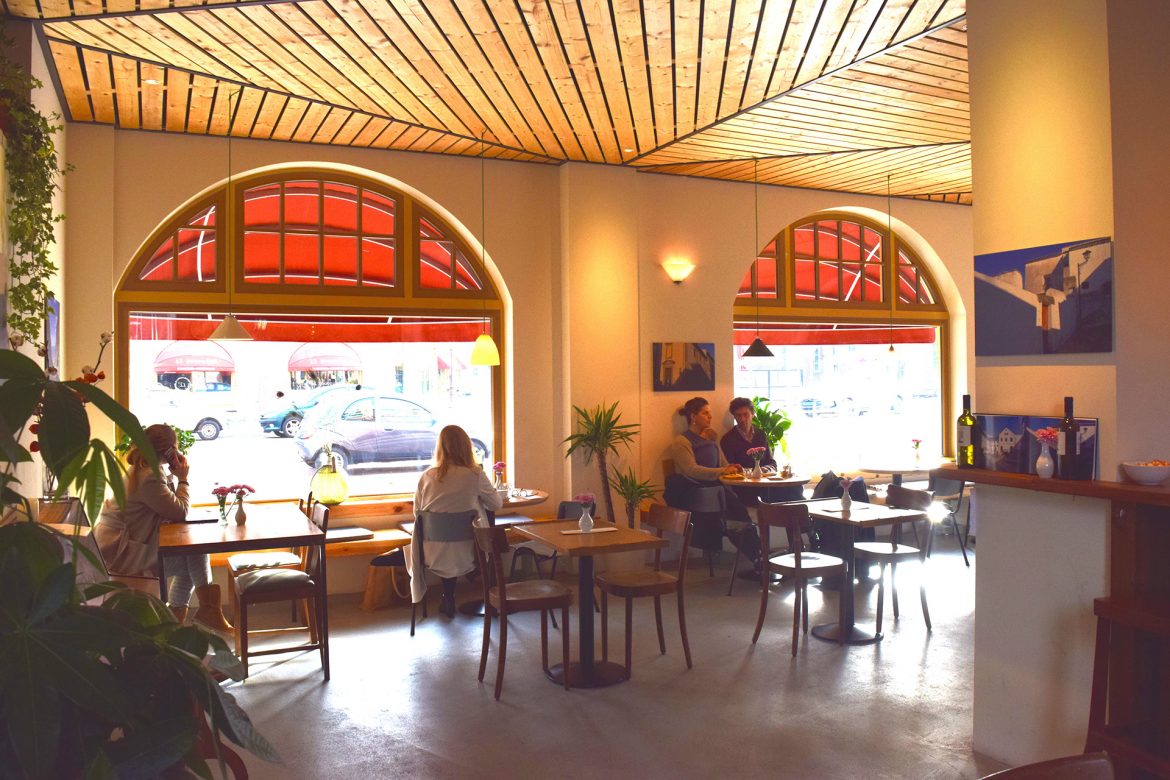
In 1999, when Kraakman began working for the Boots, he was not cuckoo for coffee. He had simply grown up in the town where the family’s shop, The Golden Coffee Box, was located and was ready to move on from his job as a children’s train conductor at the Amersfoort zoo. After a decade at Boot, he left, moved to Amsterdam, and became a barista at Espressofabriek. Thanks in part to him, several of Kraakman’s colleagues would become Amsterdam’s most respected micro-roasters—Onno van Zanten of Stooker and Francesco Grassotti of White Label Coffee among them.
In an email to Sprudge, Grassotti calls Kraakman his “coffee hero,” crediting him as his roasting fundamentals teacher and the reason he is paired with his White Label partner, Elmer Oomkens.
“I don’t think there are roasters here in the Netherlands who have more knowledge of roasting coffee than he has,” writes Grassotti. Of a dinner that Kraakman co-organized to introduce Oomkens to the local coffee industry, Grassotti recalls: “Kees told me he really wanted us to meet each other because he thought we would like each other.” The gathering ended, he continues, “with Elmer next to me, to never leave my side again! In a way, on that evening, Kees created the fundamentals of White Label Coffee.”
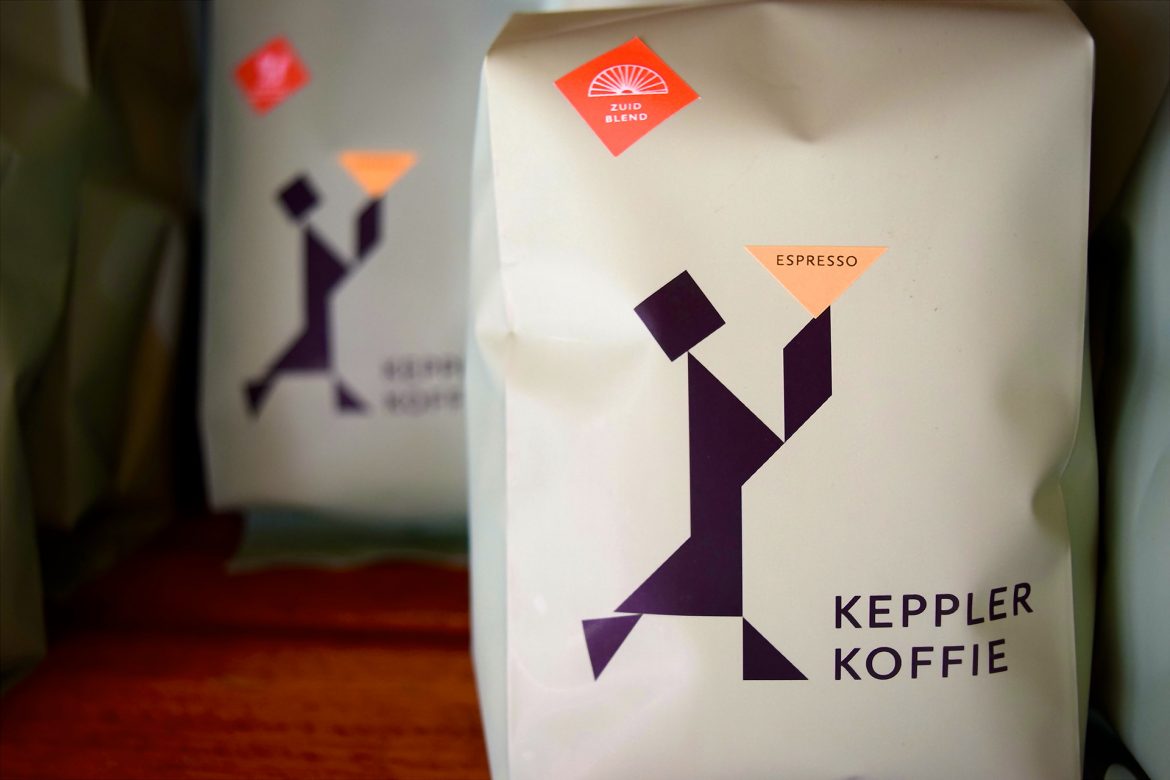

The six-kilo Giesen that handles Keppler Koffie has its own premises nearby. Although Kraakman is there on Fridays, he calls his apprentice, Bart Feberwee, the main roaster. The standard collection comprises five single origins, their Brazil-Sumatra-Yirgacheffe North Blend and, somewhat controversially, their South Blend. This Peruvian and Brazilian mix—its profile advertises “a tribute to temperamental Italy”—is the result of Kraakman’s tedious experimentation with roasting past second crack, longer than he was ever taught to do or most peers would condone. But he has his reasons.
“I’m aware of the fact that a lot of people don’t like specialty coffee—[including] friends of mine—because of the acidity,” he states.
Referring to construction workers, notably those who helped erect Keppler, he reveals: “All the aannemers and the bouwvakkers, they are complaining continuously about sour coffee. ‘Aaah, you’re building this roastery with your sour coffee. Oh, boo, boo, boo!’”
So when it comes to this clientele, he explains, “I give them this South Blend, and they say, ‘Wow, finally. This is good coffee.’”
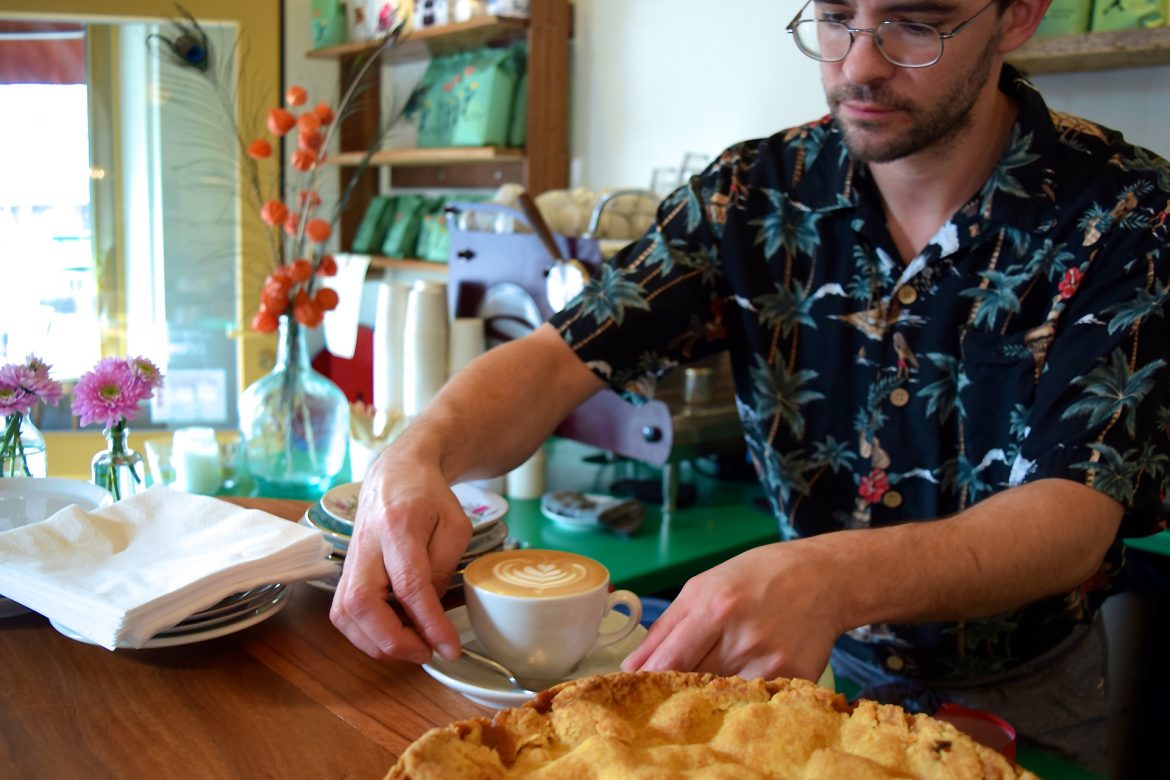
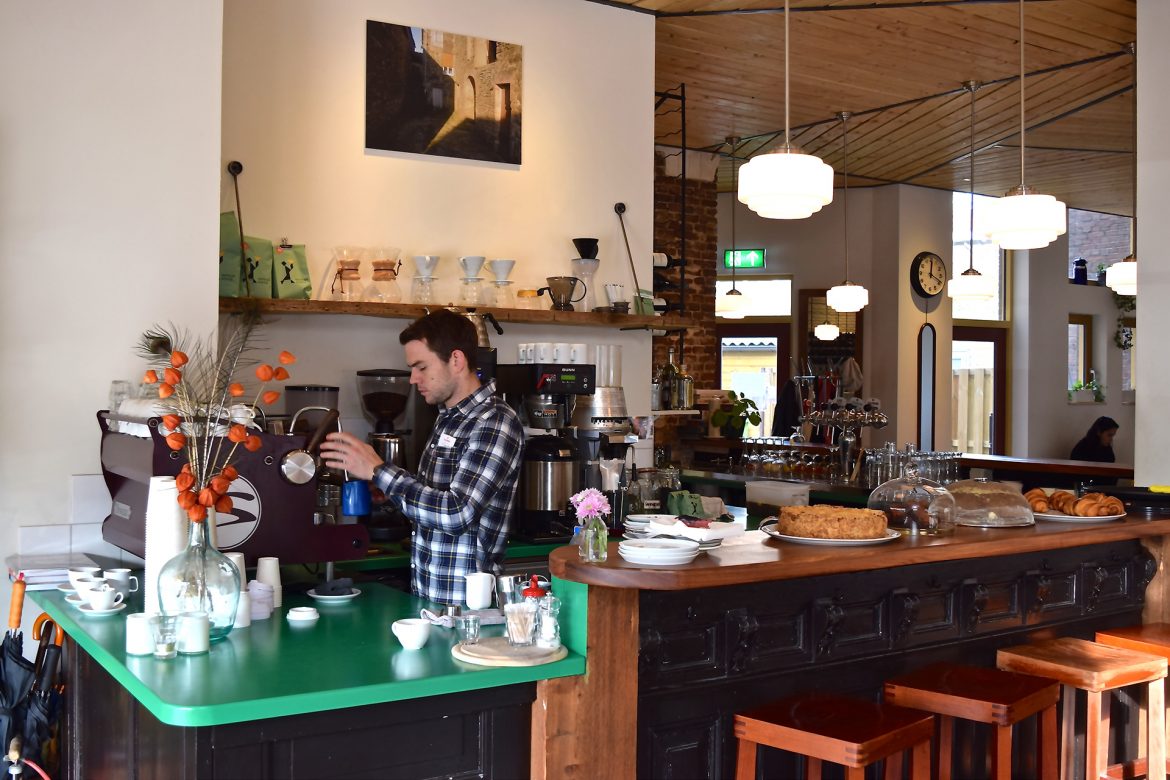
A similarly pragmatic attitude informs the decision to offer batch-brewed cups of single origins for €1.90. The Infusion Series BUNN, besides being efficient, “also fits in the mindset of a lot of people,” he says. “If you just tap a mug of coffee, that looks so much easier for a customer than if you see somebody weighing and dosing and measuring.”
For espresso, there is a two-group Synesso Cyncra. Grinders are a Nuova Simonelli Mythos One, an Anfim Caimano Barista, and a Mazzer Kony.
On a fall afternoon, Kraakman can be found sitting in a back room, flanked by his old one-kilo Giesen and Kees van der Westen Spirit Duette. It is here that he holds SCA-certified intro-to-coffee and roasting courses, part of working in his capacity as European lead trainer for Willem Boot.
“I’m really happy that we’re open and finally done, but at the same time, it was a terrible year because [it took] a lot of energy and frustration—sleepless nights,” Kraakman says. “I’m getting proud of it, but I think in two years’ time, I will be much more proud of it. There’s a lot of minor details we still need to fill in.” (Minutes before, Kraakman asked me by what color I might like to conduct an interview. He then proceeded to adjust the ceiling lights until they glowed a faint green approximating some of Keppler Koffie’s packaging.)
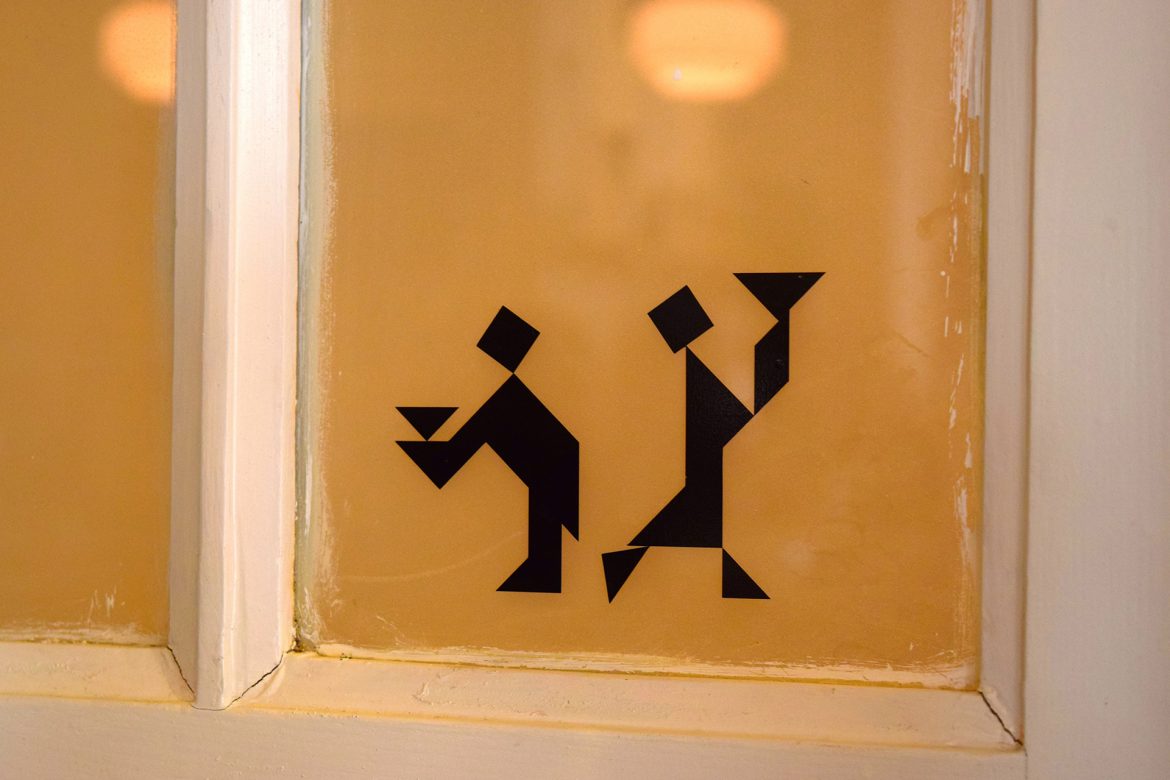
Incidentally, printed on those bags is the tangram duo from the company logo, designed by Hilje Oosterbaan and Casper Schipper. The front shows an aproned silhouette nobly holding up a tray. On the back appears a bowing tray-bearer in a tailcoat. They call to mind just what Kraakman is successfully negotiating between: specialty coffee’s peacocking and the humility required to fulfill a neighborhood’s real cafe needs.
Karina Hof is a Sprudge staff writer based in Amsterdam. Read more Karina Hof on Sprudge.



